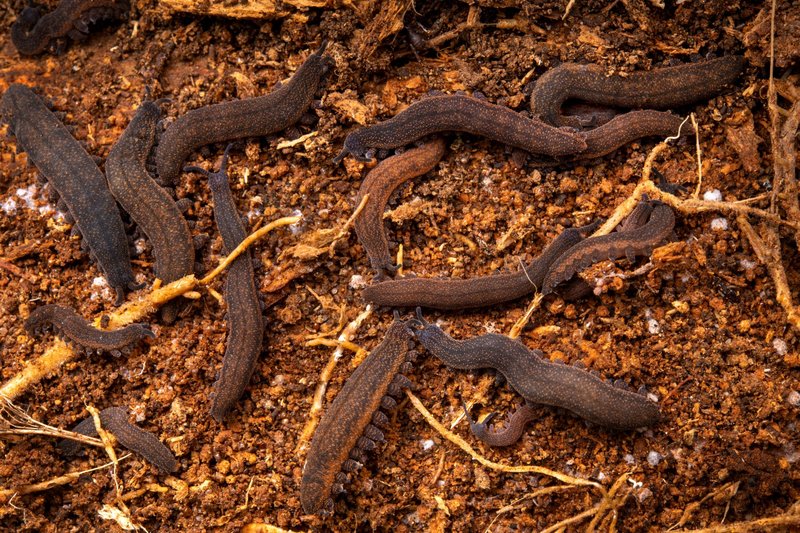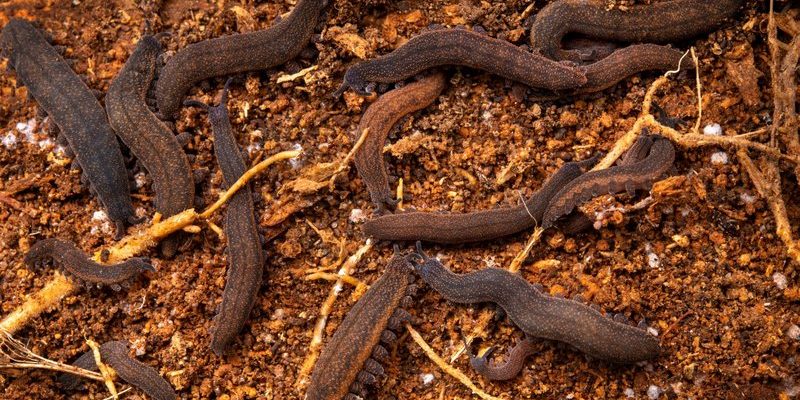
Velvet worms, or *Onychophora*, are often described as a bridge between insects and worms. They have a soft, velvety appearance and slimy bodies that make them look quite different from the typical critters we usually study. Imagine explaining to a child that these little creatures have been around for about 500 million years. That’s older than dinosaurs! Their unusual traits and ancient lineage can spark curiosity and engage students in ways that traditional lessons might not.
Integrating velvet worms into environmental education can open up discussions about habitat, adaptation, and the importance of biodiversity. Let’s dive into how these charming little creatures can enhance learning experiences and promote a greater appreciation for our planet.
What Are Velvet Worms?
Velvet worms are soft-bodied invertebrates that belong to a group called Onychophora. If you picture a cross between a caterpillar and a slug, you’re not far off! They typically have a segmented body covered in a thin layer of moisture-retaining skin that gives them their velvety texture. They also have many pairs of legs—usually 13 to 43—which help them navigate through leaf litter and their forest floor homes.
These fascinating creatures primarily inhabit tropical and subtropical regions, often hiding in damp environments like leaf litter, under logs, or inside tree bark. They breathe through tiny openings in their skin and depend on moisture to survive. This unique skin structure is a big part of what makes velvet worms special, and it can serve as a great discussion point in classrooms about how different species adapt to their environments.
Honestly, students are often captivated by how unique these creatures look, which makes them more eager to engage with the topic. Learning about velvet worms presents a chance to explore themes of evolution and survival in a visually interesting way.
The Role of Velvet Worms in Ecosystems
So, why do velvet worms matter in an educational context? For one, they play a crucial role in their ecosystems as predators and prey. They primarily feed on small invertebrates, like insects, which helps control those populations. By understanding this role, students can grasp the complexities of food webs and ecosystem dynamics.
Additionally, velvet worms are often found in environments rich in biodiversity. Their presence indicates a healthy ecosystem. If students learn to appreciate the indicators of a vibrant habitat, like the presence of velvet worms, they can develop a deeper understanding of environmental health and conservation efforts.
Here’s the thing: when kids see how interconnected all creatures are in their ecosystems, they are more likely to develop a sense of responsibility toward the environment. Velvet worms can serve as an interesting example of how tiny creatures can have large impacts on their surroundings, reinforcing the idea that every species, no matter how small, plays a role.
Using Velvet Worms in Environmental Curriculum
Incorporating velvet worms into environmental education programs can be a game-changer. Teachers can develop lessons not just around the biology of the worms but also explore broader topics like **habitat preservation** and **biodiversity**. Activities can include field trips to areas where these creatures thrive or even virtual sessions with researchers who study them.
One engaging lesson might involve students creating a habitat for their own “velvet worms” using materials like clay or paper, emphasizing the importance of moisture, shelter, and food. Or, how about organizing a scavenger hunt in the schoolyard, looking for creatures of different sizes, and comparing them to velvet worms? This hands-on approach fosters curiosity and critical thinking.
Moreover, discussions about the challenges facing velvet worms—like habitat destruction and climate change—can connect students with real-world issues. These conversations are vital for nurturing environmentally-conscious citizens. The more they know about creatures like velvet worms, the more likely they are to advocate for their protection in real-world scenarios.
Challenges in Teaching About Velvet Worms
While velvet worms are exciting, teaching about them does come with challenges. For one, they can be hard to find in the wild due to their elusive nature and specific habitat needs. This can limit hands-on learning experiences for students. However, educators can overcome this by using videos, documentaries, or guest speakers who focus on these unique creatures.
Another challenge is the misconception that small or lesser-known animals, like velvet worms, aren’t important. Some people might think that focusing on mammals or birds is more engaging. However, that’s a missed opportunity. Velvet worms provide a chance to discuss lesser-known species and their importance in maintaining ecological balance.
Encouraging students to research these creatures can be empowering. They can create presentations, infographics, or even art pieces inspired by velvet worms. This kind of active learning can help demystify any stigmas around smaller animals and deepen their appreciation for all forms of life.
Future of Velvet Worms in Environmental Education
Looking ahead, the role of velvet worms in environmental education programs is only set to grow. As awareness around biodiversity and conservation increases, educators are likely to seek out new ways to engage students in these topics. Velvet worms could easily become a cornerstone in those discussions, especially as environmental challenges continue to escalate.
With more research emerging about these creatures, there’s a wealth of information for students to explore. Lessons could evolve into exploring the impacts of climate change on velvet worm populations and their habitats, sparking informed discussions around environmental stewardship.
Moreover, schools might consider partnerships with organizations dedicated to studying and protecting these fascinating creatures. This collaboration can enhance learning and promote conservation awareness within communities. By aligning with broader educational goals, velvet worms can help shape a more environmentally-literate generation.
Incorporating velvet worms into environmental education programs enriches learning experiences by providing a window into the wonders of biodiversity. They help students grasp essential ecological concepts, emphasizing the significance of even the smallest creatures. As educators look to inspire future generations, these quirky little animals can prove to be valuable allies in fostering curiosity and respect for the environment.
So next time you’re thinking about how to make your lessons more engaging, why not consider the velvet worm? They may be small, but their impact on education—and our understanding of the environment—can be massive. Just like every creature matters in the vast tapestry of life, every lesson counts in nurturing the next generation of environmental stewards.

